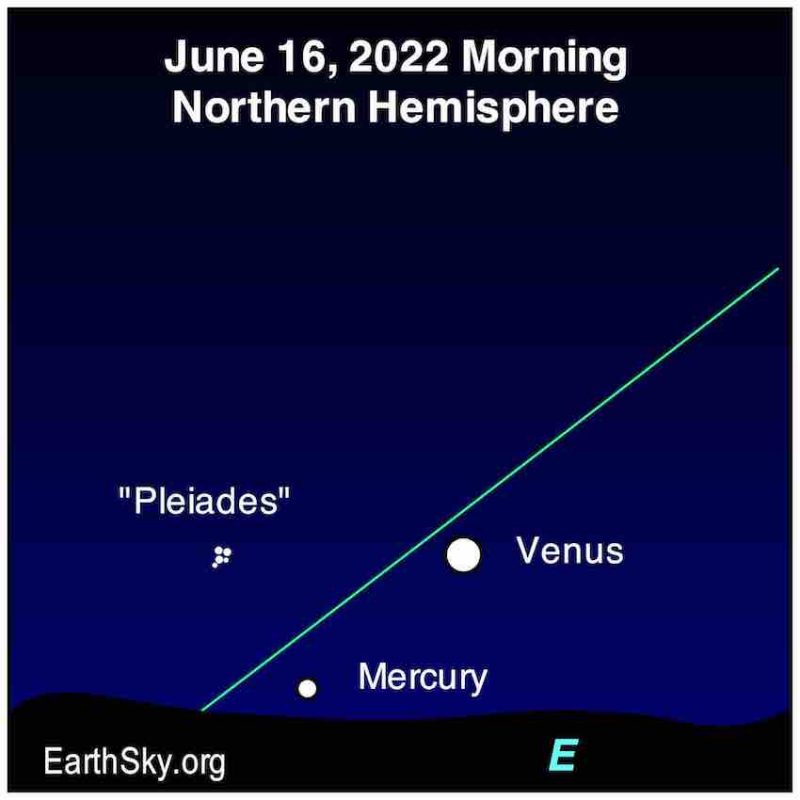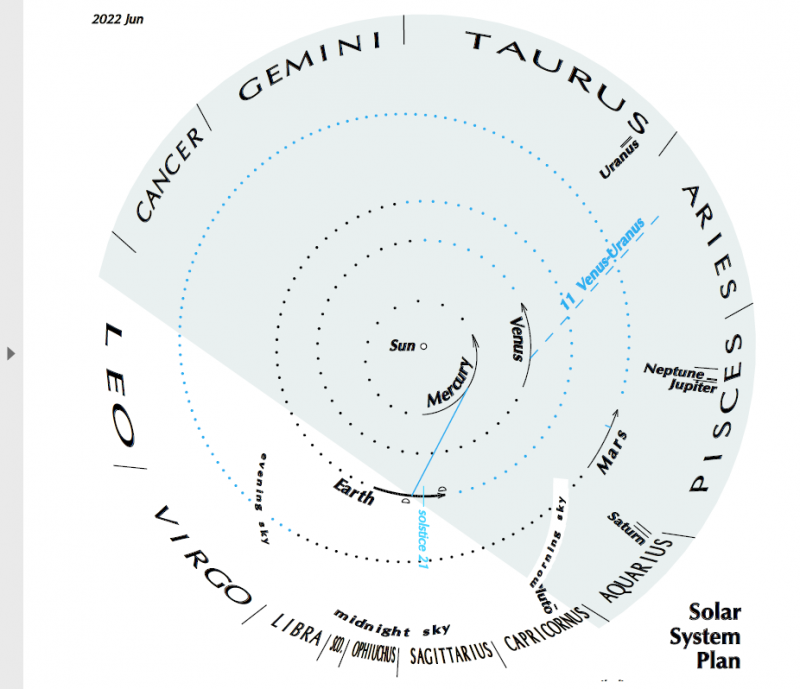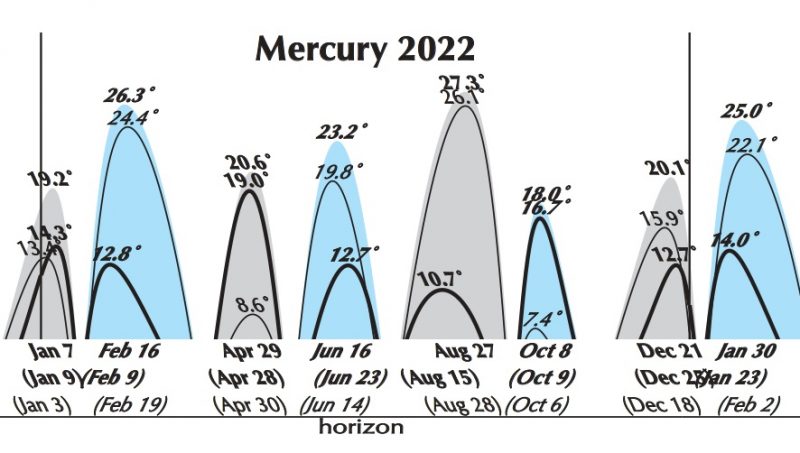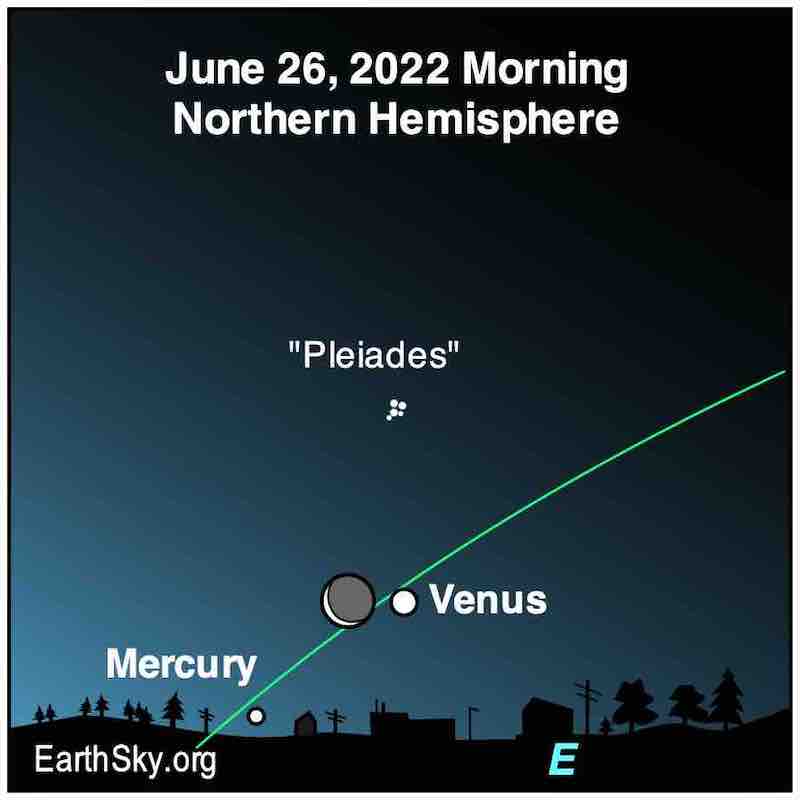
Mercury will likely become visible near the sunrise point around June 10, 2022. Once it does become visible you can see all five bright planets at once.
When to watch: Beginning around June 10, start watching for Mercury in the eastern sky before sunrise. Greatest elongation – when Mercury will be farthest from the sunrise on our sky’s dome – is mid-June. And afterwards the planet continues to get brighter. So, later in June, although it’ll be edging back toward the sunrise, Mercury will be easier to see in the twilight.
Where to look: Look in the sunrise direction, as the sky is lightening.
Greatest elongation is at 15 UTC on June 16, 2022.
Note: As soon as you can spot Mercury – beginning around June 10 – notice that it lies at the eastern end of a line of planets visible to the unaided eye. The other morning planets in June are Venus, Mars, Jupiter and Saturn. These are the brightest planets in our sky, visible to skywatchers since time immemorial. The graceful line they trace on the sky’s dome defines the ecliptic, or plane of our solar system. Two much-fainter planets – Uranus and Neptune – are also loosely clustered in the morning sky.
Northern versus Southern Hemisphere


At greatest elongation in June 2022
– Mercury’s distance from the sun on the sky’s dome is 21 degrees.
– Mercury shines at magnitude +0.5 at elongation, but afterwards brightens for the rest of June.
– Through a telescope, Mercury appears 36% illuminated, in a waning crescent phase, 6.9 arcseconds.
For precise sun and Mercury rising times at your location:
Old Farmer’s Almanac (U.S. and Canada)
timeanddate.com (worldwide).
Stellarium (online planetarium program)
Mercury events in 2022 and 2023
Jul 16, 2022: Superior conjunction (passes behind sun from Earth)
Aug 27, 2022: Greatest elongation (evening)
Sep 23, 2022: Inferior conjunction (races between Earth and sun)
Oct 8, 2022: Greatest elongation (morning)
Nov 8, 2022: Superior conjunction (passes behind sun from Earth)
Dec 21, 2022: Greatest elongation (evening)
Jan 7, 2023: Inferior conjunction (races between Earth and sun)
Jan 30, 2023: Greatest elongation (morning)
Mar 17, 2023: Superior conjunction (passes behind sun from Earth)
Apr 11, 2023: Greatest elongation (evening)
Heliocentric view of Mercury June 2022

A comparison of elongations
Not all of Mercury’s greatest elongations are created equal. Some are greater than others. The farthest from the sun that Mercury can ever appear on the sky’s dome is about 28 degrees. The least distance is around 18 degrees.
Elongations are also better or worse depending on the time of year they occur.
In the autumn for either hemisphere, the ecliptic – or path of the sun, moon and planets – makes a narrow angle to the horizon in the evening. But it makes a steep slant, nearly perpendicular, in the morning. So – in autumn from either hemisphere – morning elongations of Mercury are best. Then Mercury appears higher above the horizon and farther from the glow of the sun. Evening elongations in autumn are harder to see.


Bottom line: Watch for Mercury along with four other planets – brilliant Venus, red Mars, bright Jupiter and creamy Saturn – in the east before sunup in June 2022. Mercury reaches greatest elongation – its greatest distance from the sunrise – on June 16.
The post Mercury plus 4 planets before sunrise: Start watching now first appeared on EarthSky.
0 Commentaires